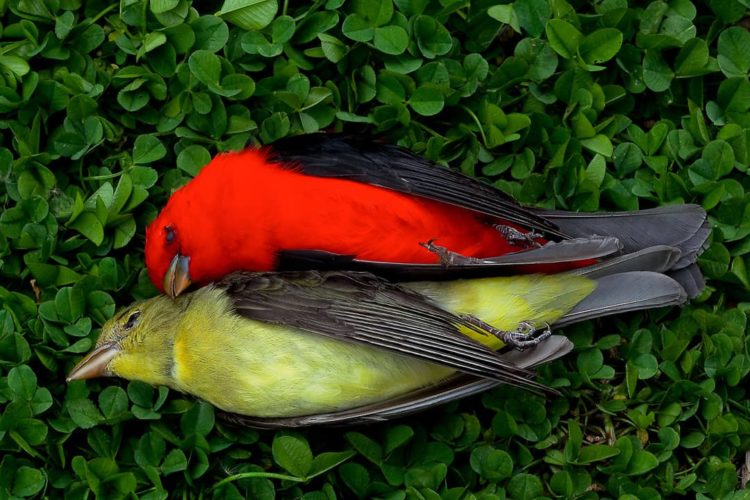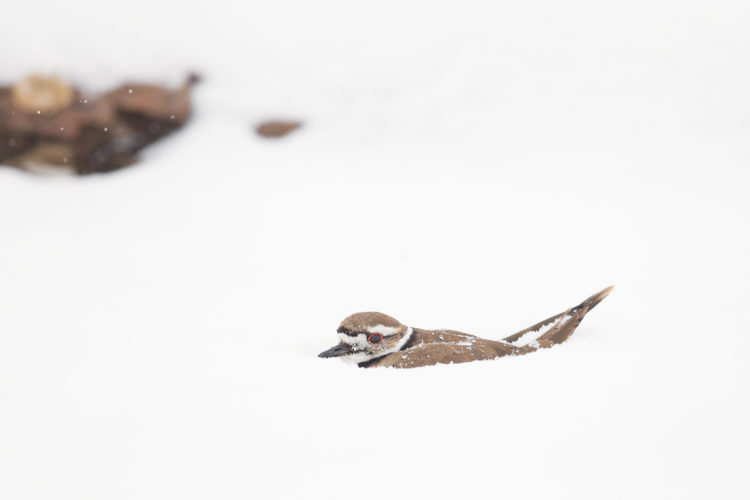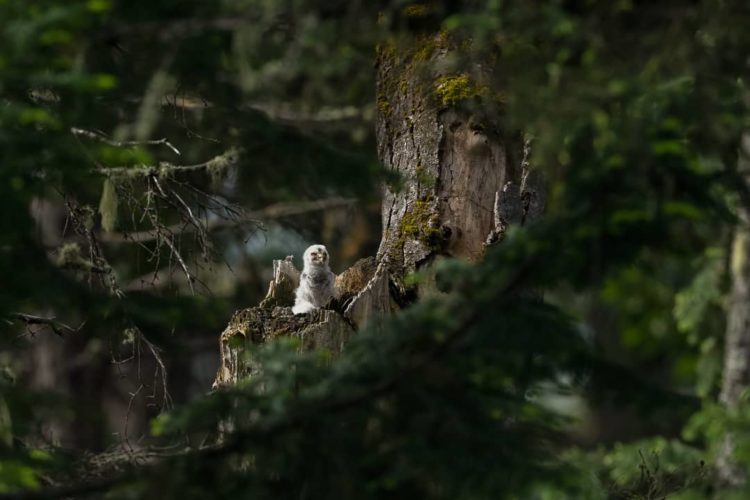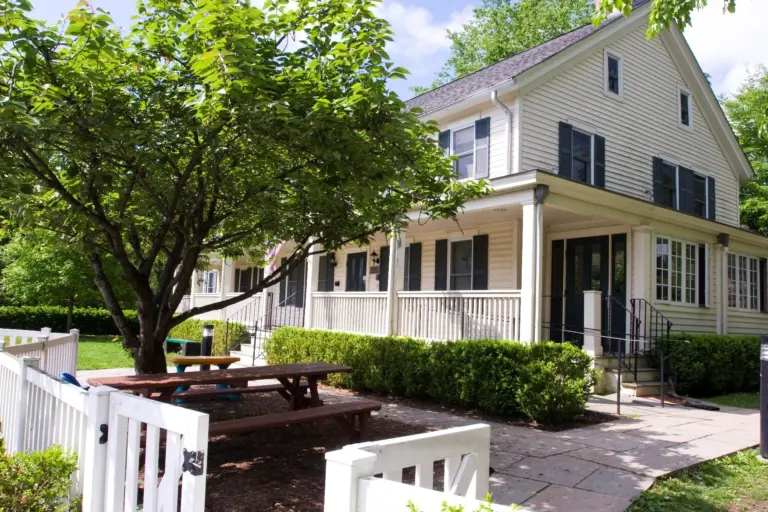
By Anne W. Semmes
It was a privilege to witness my wildlife photographer daughter Melissa Groo’s talk at the Greenwich Audubon’s Environmental Leadership Awards Benefit on June 8. (Melissa was a previous recipient of this Lifetime Achievement Award). And it is a privilege to write about her talk for the Greenwich Sentinel.
Rochelle Thomas, the impressive new executive director at the Center, introduced Melissa as “a wildlife conservation photographer and writer with the belief that photography can be both a fine art and a powerful influence for conservation…She considers herself a wildlife biographer as much as a photographer, seeking to capture unfolding animal stories with both respect and compassion.”
Melissa then held us 120-plus viewers spellbound for almost an hour with her show of images and accompanying stories. She would honor this year’s awardee, the pioneering Gary Palmer, with images of his favorite raptors, including her own favorite, a Northern Harrier. “They hunt in this beautiful way, just low over fields,” she said. While photographing a female, she had locked eyes with it. “And in that moment, I just had this feeling, ‘I want to advocate for you and the habitat that you rely on.’”
In her sharing of her extraordinary images Melissa exhibited what has become her winning way with photographing birds, with patience, with distance, with learned understanding of their behavior. It was while poised with her camera at dusk in Florida, “peering over a fence into a mangrove,” that a Great Egret had “popped out…displaying for a female and raising his aigrette feathers.” That photo won her the grand prize in Audubon’s annual contest, was featured on its cover, and displayed in the Smithsonian Museum of Natural History for a year. She’s now a consultant on the Audubon photo contest, as well as a contributing editor and photographer for Audubon Magazine.
In her many travels of both teaching and taking photography, she said, “I found that I really gravitated most to places where there was water. I loved wading birds and shorebirds. And I really loved getting as low as possible. That really brings the viewer more into the world of the bird. It throws the background out of focus.”
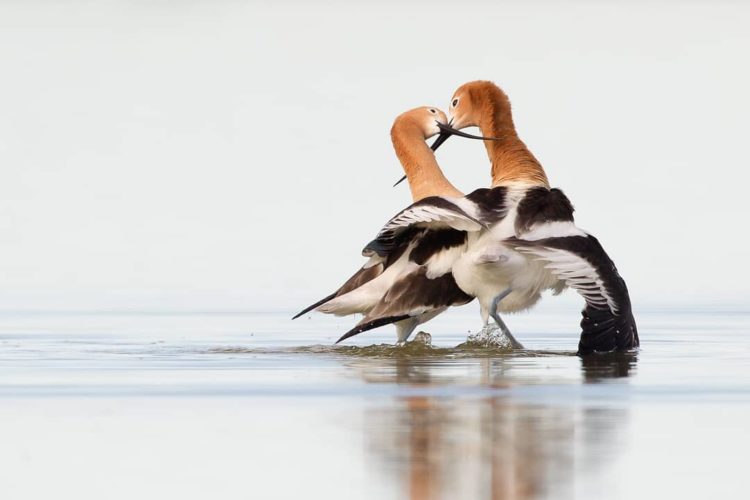
The value of patience and endurance Melissa shares often with her bird subjects. A prime example is shown in her Killdeer mothering story and image. “You know how Killdeer just make their nest in the oddest places?” In this instance in a church parking lot near her Ithaca home. With the church’s permission, she placed branches and stakes around the nest to protect it. “I was photographing her from the car as I didn’t want to disturb her.” But then came a late spring snowstorm. “Snow was coming down really thick.” Worried over the nest she raced to the church and found the killdeer mother “sitting deep in snow, so faithful, so loyal to those eggs.”
Waiting for a moment for the mother to fly off “to do her business,” Melissa captured a photo of the nest with four eggs. A week later she returned to see “little legs sticking out and there she’s got two.” Melissa would document their growing up, “because I want to educate people. I feel that there’s an urgent need to do so.”
Just as she does with the dangers to birds flying into windows. Her brilliant image of two Scarlet Tanagers found dead down the road tells the sad story. Her neighbor found the pair, a male and female, lying on the deck outside her house. “They must have been courting,” told Melissa. “The female flew into the glass doors and the male was flying after her.” All this, after their great migration journeys from the tropics. Photographer Melissa laid them side by side to best tell her conservation story of the dire need to protect these birds with decals on the glass.
She ended her talk with another raptor story of Great Gray Owls. “So last week I was in the Swan Valley of Montana which feels like the wildest place I’ve ever been…and I was taken to a nest by these owl researchers deep in the forest. And there you could see at the top of this snag a female Great Gray Owl on the nest. This is bear country, both grizzly and black…and bear actually preyed on another nest that the researchers had been following. Black bears sometimes climb up and eat the chicks.”
But Melissa, having told us of fearing “only humans and ticks” in the wild, was able to go back to this nest a couple of times by herself, sitting and shooting. “I was quite far, about 75 yards away.” At first the mother was “a little cautious, but then she grew to accept me and wasn’t bothered by me, and she would even sleep. And just to be in the presence of that owl, you know, while she’s at the nest and to have her be utterly comfortable with me. And to be in that pristine, raw forest with no other human around. It’s moments like that I absolutely live for. At one point she got up and flew away and she revealed what was there. One precious little chick.”
“And, so, I just want to end on the idea of hope and birth and great beauty. Thank you, everybody.”
Melissa Groo’s prints are available for sale on her website at www.melissagroo.com, and also in the Melissa Groo Gallery at the Greenwich Audubon Center.
